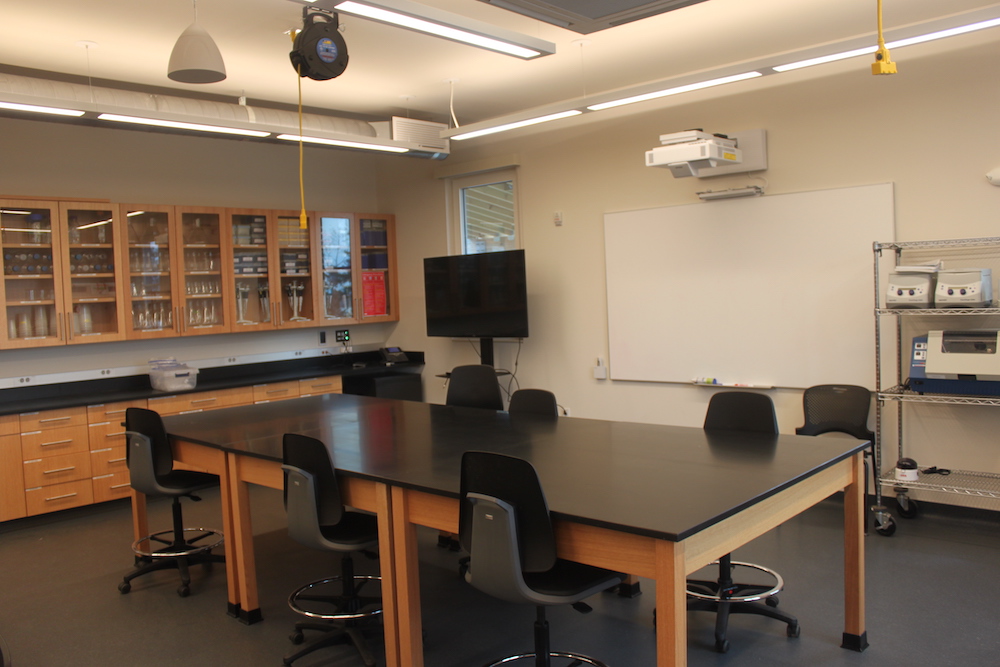Dry Laboratory Facility

The wet lab contains thirty tanks that can be continuously supplied with sea water from the nearby sound. The combination of the wet and dry labs opens new possibilities for researchers to do experiments on site.
The dry lab is sectioned into three parts: a faculty research area with a new incubator and molecular research capabilities, a preparatory lab with access to a laminar flow hood, and a student laboratory teaching space, which comfortably accommodates eighteen.
The flow hood makes it possible for students and researchers to do chemical manipulations. The incubator can culture organisms such as phytoplankton or other microbes in conditions that mimic circadian light and temperature cycles. The incubators can also grow food to feed organisms, such as clams and oysters, living in the wet lab’s tanks. A -80 degree freezer allows us to temporarily house samples on site.
For more information about equipment and instrumentation contact Jaret Reblin at jreblin@bowdoin.edu.
